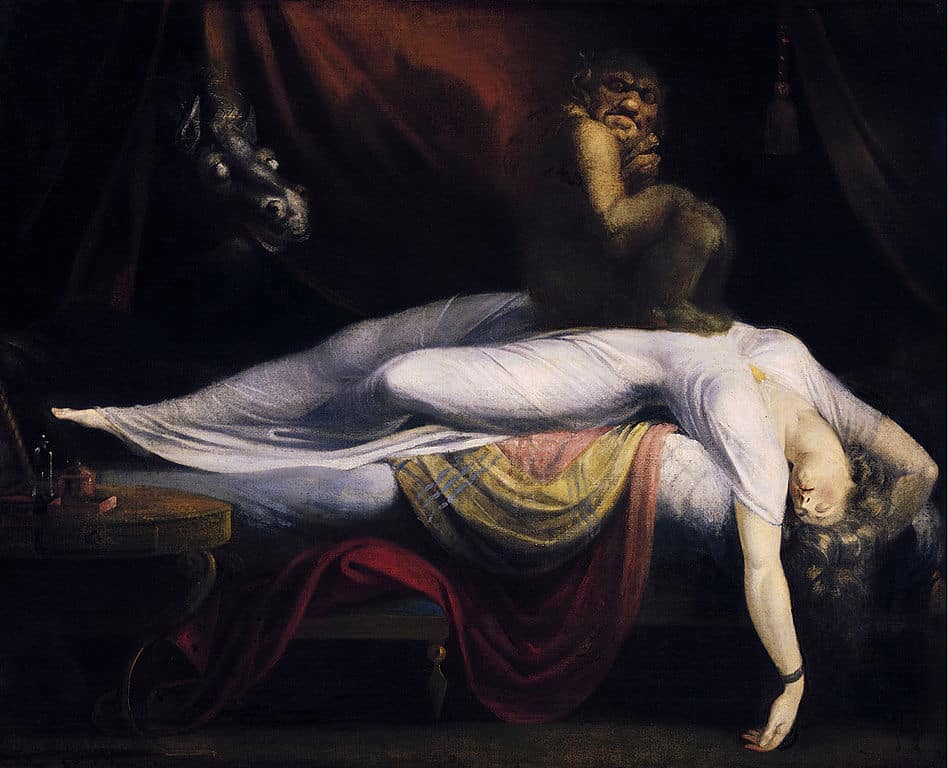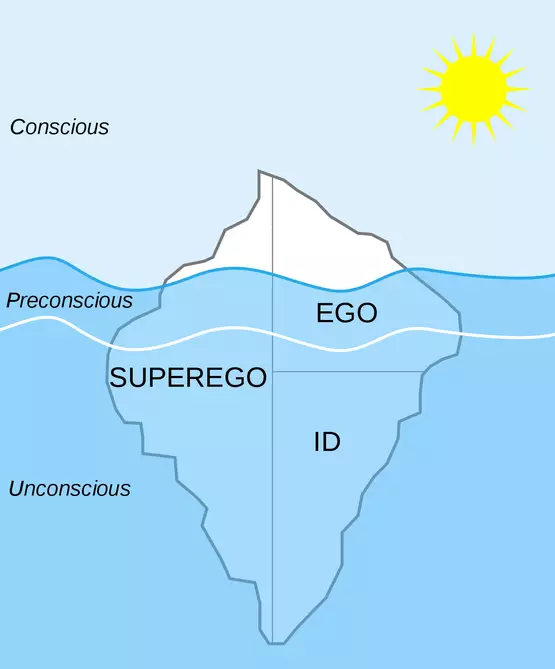The word “psychoanalysis” is derived from the Greek word “psychoanalysis” (psyche – soul, analysis – to investigate). Psychoanalysis is a psychological theory that emphasizes the survival in the subconscious of natural urges suppressed by the consciousness. This term refers to a style of psychotherapy that arose from Sigmund Freud’s and Josef Breuer’s cathartic method. Psychoanalysis revolves around the exploration of the unconscious. This clinical examination is based on the “free association” of the patient and the “interpretation” of the psychoanalyst. It is utilized in four ways: as a theory of how the human mind works, as a therapy technique for mental problems, as a research tool, and as a way of perceiving and comprehending cultural and social aspects such as politics, literature, art, movies, movements, music.
An idea of psychoanalysis is that everyone has thoughts, feelings, desires, and memories that can be found only on the unconscious level. The purifying of human emotions is referred to as catharsis. The phrase comes from the Greek (kátharsis), which means “purification”. In terms of therapy, authors such as Sigmund Freud return to the concept of Greek catharsis.
Catharsis
Catharsis is a method of directing a patient to unblock repressed memories or experiences in their unconscious, frequently associated with earlier traumatic events, in order for them to be able to talk about it and subsequently, they will resolve their intrinsic problems. Bringing material from the unconscious to the conscious can result in catharsis and assist people to identify their current challenges.
To shield ourselves from the information in our subconscious, a person employs a number of protection mechanisms, and psychosocial traumas can be found between the two levels of the mind: the conscious and unconscious mind. Finally, a qualified analyst can help bring certain aspects of the subconscious into consciousness by employing a variety of psychoanalytic techniques such as dream analysis and free association.
The father of psychoanalysis is Sigmund Freud, an Austrian neuropsychiatrist and the creator of the school of psychological psychoanalysis who lived between 1856 and 1939. This school of thought stressed the unconscious’s effect on human conduct.
Despite his predecessors’ skepticism, Freud’s insights transformed the way psychologists viewed the human mind and behavior, leaving an influence on the profession. Academics and others still accept his views on sexuality, the unconscious mind, and dream symbolism.
According to Freud, psychoanalysis is not an objective scientific investigation, but rather a therapeutic act with the goal of changing behavior. He stressed the significance of the unconscious mind and its purpose to bring the things that are hidden in the unconscious to consciousness. According to Freudian theory, the unconscious is made up of distinct intellectual and emotional parts that stay repressed because they have a problematic meaning for the conscious mind.
In other words, they are not kept hidden because they are difficult or have little impact on a person’s everyday life. On the contrary, some psychoanalysts refer to repressed parts as relatively simple notions that may be “translated” into reality. He also pointed out the fact that personality is split into three components, according to Freud’s classic psychoanalytic theory: the id, the ego, and the superego.
These factors interact to create complex human behaviors. Furthermore, certain parts of a person’s personality are more fundamental and may put someone under pressure to act on his most basic desires. Other components of a person’s personality work against his impulses, forcing him to conform to reality’s expectations.
Dream Theory
One of Freud’s most important theories was the dream theory. Freud posits that dreams are a hallucinatory fulfillment of desires and, consequently, a privileged route of access to the unconscious, through the use of the interpretive method based on the free association of the most important symbols of the dream. The dream updates and elaborates on day residue memories, which are made up of recent past experiences, and connects them to unconscious wants, fears, and protective systems that may be traced back to infancy.
The dream is constructed in the style of a psychedelic sequence of visual, auditory, and – on rare occasions – other forms of sensory stimuli. The hallucinatory aspect of dreams results from a regressive process in which mental processes are converted into sensory experiences during sleep using accessible memory contents. (Freud 1900, pp. 425–430).[1] The material in the dream-thoughts influences all aspects of the dream’s content, culminating with a complicated interplay between the dream’s content and dream thought: Analysis reveals yet another side of the complicated relationship between the content of the dream and the dream-thoughts. Several dream components reflect a single dream thought, and these aspects cross and interweave each other multiple times throughout their journey: The whole of the dream content is derived from the dream thoughts, and almost all the dream-thoughts are represented in the dream content.[2]
Although the most obvious element in the manifest content of a dream is assumed to be the most important one, it may be argued that it is frequently a vague component that proves to be the most direct root of the monumental dream idea. He writes in his book On Dream(1901): In the course of the dream-work, the physical intensity passes over the thoughts and ideas to which it properly belongs on to others which in our judgment have no claim to any such emphasis.[3]
The Id, the Ego, and the Superego
Sigmund Freud divided the mind into three parts: the preconscious, the conscious, and the unconscious.[4] The iceberg metaphor, developed by Sigmund Freud, is meant to demonstrate the presence of instances or portions of our psychological machinery that are not immediately accessible at a voluntary and conscious level: conscious awareness is the tip of the iceberg, while the unconscious is the ice concealed beneath the surface of the ocean.[5]
Each individual also contains psychological energy, which is organized into three primary personality structures: the id, the ego, and the superego. Each component, according to Sigmund Freud, contributes to personality in its own unique way, and all three aspects combine to form complex human activities. Certain characteristics of our personalities, according to this hypothesis, may urge us to act on our most primal wants. Other components of the personality may be able to counterbalance these impulses and bring them into line with the necessities of reality.
The idea of the “id” derives mostly from Sigmund Freud’s work in the field of psychoanalysis. The “id,” together with the ego and superego, is one of the three essential components of the human psyche, according to Freudian philosophy: The super-ego, the ego, and the id- these, then, are three realms, regions, provinces, into which we divide an individual’s mental apparatus, and with the mutual relations of which we shall be concerned in what follows.[6]
The Freudian model’s id is the component of the human mind associated with impulses and instinct. The organism’s basic natural needs, particularly sexual wants, lead it to seek pleasure. The ego is the center of logic, reality checking, and common sense, and it has a range of defense strategies capable of redirecting, inhibiting, or changing the manifestation of unrealistic or forbidden drive impulses: The ego is that portion of the id which was modified by the proximity and influence of the external world, which is adapted for the reception of stimuli and as a protective shield against stimuli.[7]
The superego is a distinction inside the ego that conveys the ego’s “ideal.” It emerges as a result of the Oedipal drama, in which the child adopts the power and grandeur of parental figures through identification.[8] The superego guides the mental machinery to strive for idealistic goals and perfection, whereas the id wants pleasure and the ego is led by the reality principle. It is a crucial moral and ethical censorship.
There is a conflict between the Superego and the other two psychic levels, which Freud believed were at the root of most mental disorders and diseases. According to Freud, a strong Superego succeeds in managing the biological id’s impulses, whereas a weak Superego succumbs to them. Furthermore, the quantity of guilt felt in both situations will be larger and lower, respectively.
By balancing the opposing needs of the three aspects, a healthy personality may successfully build its biological, psychological, and social character. When the energy balance is not dispersed equally, it can cause intrapsychic conflicts and behavioral issues. If the Id seizes control and he gains it, the individual will start acting impulsively and will try to satisfy his desires as soon as possible.
A person who has a powerful and domineering ego is most likely calculated, analytical, and cold. One person with an extremely powerful superego, on the other hand, is prone to self-judgment, high standards, and a sense of inadequacy and self-criticism.
Sigmund Freud was without a doubt one of the twentieth century’s most influential intellectuals. His theory that our minds store memories and emotions in our subconscious altered people’s understanding of the human mind. Freud recognized that the study of the mind through psychoanalysis may give a complete understanding of culture and society. It is safe to assume that without Freud’s colossal, pioneering work, the present study of the mind, therapeutic practice, and the way ordinary people cope with themselves and others would be substantially different.
BIBLIOGRAPHY:
- Freud, S. (1933). New Introductory Lectures On Psycho-Analysis. The Standard Edition of the Complete Psychological Works of Sigmund Freud, Volume XXII (1932-1936): New Introductory Lectures on Psycho-Analysis and Other Works, 1-182.
- Zeigler-Hill V., Shackelford T. K., Encyclopedia of personality and individual differences, Springer International Publishing AG, 2020
- Freud, S. (1923). The Ego and the Id. The Standard Edition of the Complete Psychological Works of Sigmund Freud, Volume XIX (1923- 1925): The Ego and the Id and Other Works, London, England: Hogarth Press, pp. 31-32
- Freud, S. (1900). The interpretation of dreams. In: The standard edition of the complete psychological works of Sigmund Freud. (Translated from the German under the general editorship of James Strachey, in collaboration with Anna Freud, assisted by Alix Strachey, Alan Tyson, and Angela Richards). (Vol. 4/5, 1953, pp.425-430). London: Hogarth Press and the Institute of PsychoAnalysis
- Thornton SP., Sigmund Freud (1856-1939). Internet Encyclopedia of Philosophy.
- Freud, S., The Essentials of Psychoanalysis, Vintage, 2008
- Grunbaum, A. (1984). The foundations of psychoanalysis: A philosophical critique. Berkeley, CA: University of California Press
- Reppen, J. (Ed.) (1985). Beyond Freud: A study of modern psychoanalytic theorists. Hillsdale, NJ: Erlbaum.
- Freud, S. (1901). On Dreams. The Standard Edition of the Complete Psychological Works of Sigmund Freud, Volume V (1900-1901): The Interpretation of Dreams (Second Part) and On Dreams, 629-686
[1] Freud, S. (1900). The interpretation of dreams. In: The standard edition of the complete psychological works of Sigmund Freud. (Translated from the German under the general editorship of James Strachey, in collaboration with Anna Freud, assisted by Alix Strachey, Alan Tyson, and Angela Richards). (Vol. 4/5, 1953, pp.425-430). London: Hogarth Press and the Institute of PsychoAnalysis
[2] Freud, S. (1901). On Dreams. The Standard Edition of the Complete Psychological Works of Sigmund Freud, Volume V (1900-1901): The Interpretation of Dreams (Second Part) and On Dreams, 629-686
[3] Freud, S. (1901). On Dreams. The Standard Edition of the Complete Psychological Works of Sigmund Freud, Volume V (1900-1901): The Interpretation of Dreams (Second Part) and On Dreams, 629-686
[4] Zeigler-Hill V., Shackelford T. K., Encyclopedia of personality and individual differences, Springer International Publishing AG, 2020
[5] Thornton SP. Sigmund Freud (1856-1939). Internet Encyclopedia of Philosophy.
[6] Freud, S., The Essentials of Psychoanalysis, Vintage, 2008
[7] Freud, S., The Essentials of Psychoanalysis, Vintage, 2008
[8] Freud, S. (1923). The Ego and the Id. The Standard Edition of the Complete Psychological Works of Sigmund Freud, Volume XIX (1923- 1925): The Ego and the Id and Other Works, pp. 31-32



